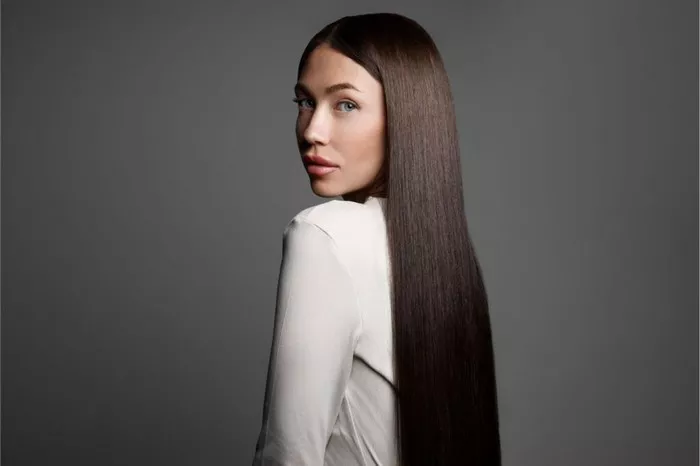Everyone dreams of having silky, shiny hair, but many forget that hair health starts from within. While shampoos and conditioners play a role, your diet is the foundation of strong, smooth hair. Hair is made of keratin, a protein that relies on vitamins, minerals, and healthy fats to grow and stay vibrant. This guide breaks down the best foods for silky hair, explaining how each nutrient helps and where to find them. Let’s dive in!
The Structure of Hair and Why Nutrients Matter
Hair grows from follicles in your scalp. Each strand has three layers: the medulla (inner core), cortex (middle layer with keratin and pigment), and cuticle (protective outer layer). For hair to stay soft and shiny, follicles need a steady supply of nutrients. Poor diets lead to dry, brittle hair or hair loss. By eating the right foods, you nourish follicles, boost growth, and enhance shine.
Essential Nutrients for Silky Hair
Protein: The Building Block of Hair
Hair is mostly protein. Without enough protein, hair grows weak and may fall out.
Why It Helps: Keratin, a type of protein, strengthens hair structure.
Food Sources:
- Eggs: Rich in protein and biotin (a B vitamin that supports keratin production).
- Lean meats (chicken, turkey): Provide iron and zinc.
- Lentils and beans: Plant-based protein packed with fiber and iron.
- Greek yogurt: High in protein and vitamin B5 (improves blood flow to the scalp).
Tip: Aim for 45–55 grams of protein daily, depending on your weight.
Vitamins: The Growth Boosters
Vitamin A:
- Role: Produces sebum, the scalp’s natural oil that prevents dryness.
- Sources: Sweet potatoes, carrots, spinach, and kale.
Vitamin C:
- Role: Builds collagen (strengthens hair) and helps absorb iron.
- Sources: Citrus fruits, strawberries, bell peppers, and broccoli.
Vitamin E:
- Role: Protects hair from sun damage and improves scalp circulation.
- Sources: Almonds, sunflower seeds, avocados, and spinach.
B Vitamins (Biotin, B12, Folate):
- Role: Biotin prevents brittleness; B12 and folate boost red blood cells (carry oxygen to follicles).
- Sources: Eggs (biotin), salmon (B12), and leafy greens (folate).
Minerals: The Silent Heroes
Zinc:
- Role: Repairs hair tissues and supports oil glands. Deficiency causes dandruff.
- Sources: Oysters, pumpkin seeds, beef, and chickpeas.
Iron:
- Role: Carries oxygen to follicles. Low iron leads to hair thinning.
- Sources: Red meat, lentils, tofu, and spinach. Pair with vitamin C for better absorption.
Selenium:
- Role: Protects scalp from dryness with antioxidants.
- Sources: Brazil nuts, tuna, and whole grains.
Omega-3 and Omega-6 Fatty Acids: The Hydrators
These fats keep your scalp moisturized and reduce inflammation that causes hair loss.
Sources:
- Fatty fish (salmon, mackerel, sardines).
- Flaxseeds, chia seeds, and walnuts.
- Plant oils (flaxseed oil, sunflower oil).
Hydration: Water for Hair Health
Dehydration makes hair dry and prone to breakage. Water hydrates cells, including follicles, promoting growth and elasticity.
- Goal: Drink 8–10 glasses of water daily. Add cucumber or lemon for flavor.
Superfoods for Silky Hair
These foods combine multiple nutrients:
- Avocado: Packed with vitamins E, B, and healthy fats.
- Berries: High in antioxidants and vitamin C.
- Sweet Potatoes: Loaded with beta-carotene (converts to vitamin A).
- Oats: Contain zinc, iron, and fiber for a healthy scalp.
Foods to Avoid
Some foods harm hair health:
- Sugar: Causes inflammation and weakens hair proteins.
- Processed Foods: Lack nutrients and may contain unhealthy fats.
- High-Mercury Fish: Swordfish and tuna can lead to hair loss.
- Alcohol: Dehydrates the body and reduces nutrient absorption.
Sample Meal Plan for Silky Hair
Breakfast:
- Spinach omelet (eggs for protein, spinach for iron) + orange juice (vitamin C).
Snack:
- Greek yogurt with berries and almonds.
Lunch:
- Grilled salmon (omega-3s) + quinoa (protein) + steamed broccoli (vitamin C).
Snack:
- Hummus with carrot sticks.
Dinner:
- Lentil curry (iron and protein) + brown rice + avocado salad.
Dessert:
- Dark chocolate (70% cocoa for iron and zinc).
Additional Tips
- Cook Smart: Avoid overcooking veggies to preserve nutrients.
- Limit Heat Styling: Protect hair from damage while your diet works internally.
- Be Patient: Hair grows slowly; allow 2–3 months to see changes.
Conclusion
Silky hair isn’t just about what you put on your hair—it’s about what you put on your plate. By focusing on proteins, vitamins, minerals, and healthy fats, you’ll nourish your hair from root to tip. Combine these foods with hydration and avoid harmful choices for best results. Remember, consistency is key. Start today, and your hair will thank you!
Related topics:
8 Effective Ways to Get Dandruff-Free Silky Hair
How to Get Straight and Silky Hair?
How to Get Silky Hair in 10 Minutes: Just 6 Steps


